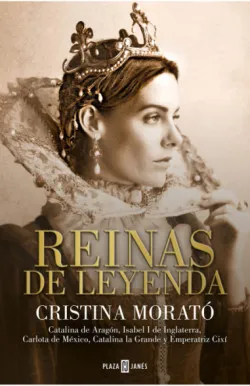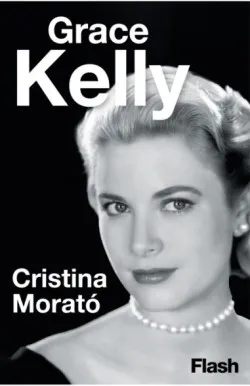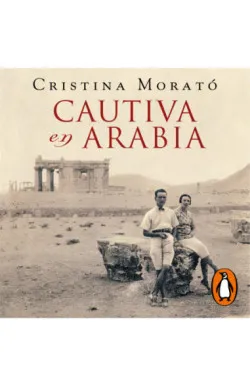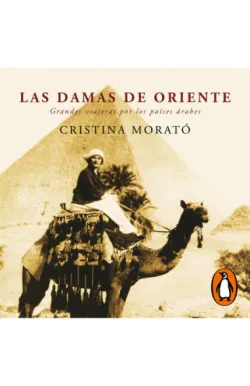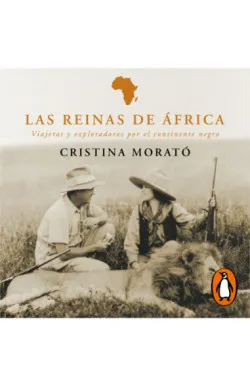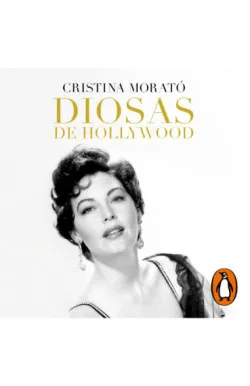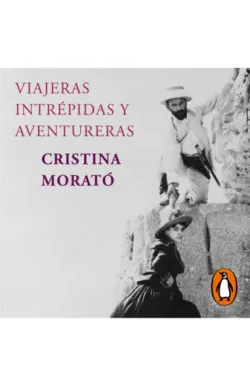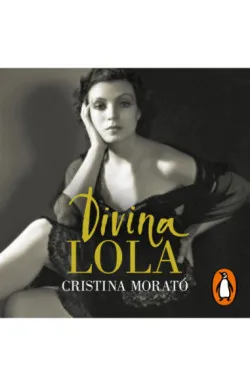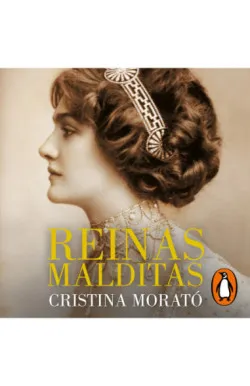
Libros
{"6":{"title":"Literatura","href":"https:\/\/www.penguinlibros.com\/es\/6-literatura-libros","children":{"23":{"title":"Novela rom\u00e1ntica","href":"https:\/\/www.penguinlibros.com\/es\/23-novela-romantica","children":null},"7":{"title":"Aventuras","href":"https:\/\/www.penguinlibros.com\/es\/7-libros-de-aventura","children":null},"9":{"title":"Ciencia ficci\u00f3n","href":"https:\/\/www.penguinlibros.com\/es\/9-libros-de-ciencia-ficcion","children":null},"11":{"title":"Fantas\u00eda","href":"https:\/\/www.penguinlibros.com\/es\/11-libros-de-fantasia","children":null},"13":{"title":"Grandes cl\u00e1sicos","href":"https:\/\/www.penguinlibros.com\/es\/13-libros-clasicos","children":null},"14":{"title":"Literatura contempor\u00e1nea","href":"https:\/\/www.penguinlibros.com\/es\/14-literatura-contemporanea","children":null},"17":{"title":"Novela hist\u00f3rica","href":"https:\/\/www.penguinlibros.com\/es\/17-novela-historica","children":null},"19":{"title":"Novela literaria","href":"https:\/\/www.penguinlibros.com\/es\/19-novela-literaria","children":null},"20":{"title":"Novela negra, misterio y thriller","href":"https:\/\/www.penguinlibros.com\/es\/20-novela-negra-misterio-y-thriller","children":null},"24":{"title":"Poes\u00eda","href":"https:\/\/www.penguinlibros.com\/es\/24-libros-de-poesia","children":null},"26":{"title":"Ficci\u00f3n femenina","href":"https:\/\/www.penguinlibros.com\/es\/26-narrativa-femenina","children":null}}},"49":{"title":"C\u00f3mic e ilustrados","href":"https:\/\/www.penguinlibros.com\/es\/49-comic-e-ilustrados","children":{"56":{"title":"C\u00f3mic","href":"https:\/\/www.penguinlibros.com\/es\/56-los-mejores-comic"},"134747":{"title":"Novela gr\u00e1fica","href":"https:\/\/www.penguinlibros.com\/es\/134747-novela-grafica"},"134748":{"title":"Libros ilustrados","href":"https:\/\/www.penguinlibros.com\/es\/134748-libros-ilustrados"},"52":{"title":"C\u00f3mic infantil","href":"https:\/\/www.penguinlibros.com\/es\/52-comic-infantil"},"51":{"title":"C\u00f3mic juvenil","href":"https:\/\/www.penguinlibros.com\/es\/51-comic-juvenil"},"50":{"title":"C\u00f3mic de autor","href":"https:\/\/www.penguinlibros.com\/es\/50-comic-de-autor"},"53":{"title":"C\u00f3mic de humor","href":"https:\/\/www.penguinlibros.com\/es\/53-comic-de-humor"},"54":{"title":"C\u00f3mic de no ficci\u00f3n","href":"https:\/\/www.penguinlibros.com\/es\/54-comic-de-no-ficcion"},"55":{"title":"C\u00f3mics de influencers","href":"https:\/\/www.penguinlibros.com\/es\/55-comics-de-influencers"},"198626":{"title":"Manga","href":"https:\/\/www.penguinlibros.com\/es\/198626-manga-comic"}}},"63":{"title":"Salud y bienestar","href":"https:\/\/www.penguinlibros.com\/es\/63-salud-y-bienestar","children":{"64":{"title":"Autoayuda","href":"https:\/\/www.penguinlibros.com\/es\/64-libros-autoayuda","children":null},"65":{"title":"Espiritualidad","href":"https:\/\/www.penguinlibros.com\/es\/65-libros-de-espiritualidad","children":null},"66":{"title":"Familia y crianza","href":"https:\/\/www.penguinlibros.com\/es\/66-libros-crianza","children":null},"67":{"title":"Nutrici\u00f3n, belleza y fitness","href":"https:\/\/www.penguinlibros.com\/es\/67-libros-nutricion-fitness-belleza","children":null}}},"69":{"title":"Ocio y libro pr\u00e1ctico","href":"https:\/\/www.penguinlibros.com\/es\/69-ocio-y-libro-practico","children":{"70":{"title":"Arte, cine y m\u00fasica","href":"https:\/\/www.penguinlibros.com\/es\/70-libro-de-arte-cine-y-musica","children":null},"71":{"title":"Business","href":"https:\/\/www.penguinlibros.com\/es\/71-libro-de-negocio","children":null},"72":{"title":"Cocina","href":"https:\/\/www.penguinlibros.com\/es\/72-libros-de-cocina","children":null},"77":{"title":"Gu\u00edas y literatura de viajes","href":"https:\/\/www.penguinlibros.com\/es\/77-guias-y-literatura-de-viajes","children":null},"78":{"title":"Tiempo libre","href":"https:\/\/www.penguinlibros.com\/es\/78-tiempo-libre","children":null},"83":{"title":"Uso de la lengua y diccionarios","href":"https:\/\/www.penguinlibros.com\/es\/83-uso-de-la-lengua-y-diccionarios","children":null}}},"84":{"title":"Libros infantiles","href":"https:\/\/www.penguinlibros.com\/es\/84-libros-infantiles","children":{"85":{"title":"De 0 a 3 a\u00f1os","href":"https:\/\/www.penguinlibros.com\/es\/85-libros-infantiles-3-anos","children":null},"90":{"title":"A partir de 4 a\u00f1os","href":"https:\/\/www.penguinlibros.com\/es\/90-libros-infantiles-4-anos","children":null},"97":{"title":"A partir de 7 a\u00f1os","href":"https:\/\/www.penguinlibros.com\/es\/97-libros-ninos-7-anos","children":null},"103":{"title":"A partir de 9 a\u00f1os","href":"https:\/\/www.penguinlibros.com\/es\/103-libros-ninos-9-anos","children":null}}},"109":{"title":"Literatura juvenil","href":"https:\/\/www.penguinlibros.com\/es\/109-libros-juveniles","children":{"110":{"title":"Ocio (juvenil)","href":"https:\/\/www.penguinlibros.com\/es\/110-arte-musica-y-fotografia"},"111":{"title":"Autoconocimiento y bienestar","href":"https:\/\/www.penguinlibros.com\/es\/111-autoconocimiento-y-salud"},"112":{"title":"Historias reales","href":"https:\/\/www.penguinlibros.com\/es\/112-biografias-e-historias-reales"},"113":{"title":"Ciencia ficci\u00f3n juvenil","href":"https:\/\/www.penguinlibros.com\/es\/113-ciencia-ficcion-juvenil"},"114":{"title":"Ciencia, tecnolog\u00eda y naturaleza","href":"https:\/\/www.penguinlibros.com\/es\/114-ciencia-tecnologia-y-naturaleza"},"117":{"title":"Libros juveniles de Influencers","href":"https:\/\/www.penguinlibros.com\/es\/117-libros-de-influencers-juvenil"},"118":{"title":"Novelas juveniles","href":"https:\/\/www.penguinlibros.com\/es\/118-novelas-juveniles","children":null},"119":{"title":"Novela rom\u00e1ntica juvenil","href":"https:\/\/www.penguinlibros.com\/es\/119-libros-romanticos-juveniles","children":null},"120":{"title":"Novela juvenil de aventuras","href":"https:\/\/www.penguinlibros.com\/es\/120-novela-juvenil-de-aventuras"},"121":{"title":"Poes\u00eda juvenil","href":"https:\/\/www.penguinlibros.com\/es\/121-libros-de-poesia-juvenil"},"122":{"title":"Thriller juvenil","href":"https:\/\/www.penguinlibros.com\/es\/122-thriller-juvenil"},"123":{"title":"Tiempo libre (juvenil)","href":"https:\/\/www.penguinlibros.com\/es\/123-tiempo-libre-juvenil"},"217493":{"title":"Activismo","href":"https:\/\/www.penguinlibros.com\/es\/217493-activismo"},"116":{"title":"Novela fant\u00e1stica juvenil","href":"https:\/\/www.penguinlibros.com\/es\/116-novela-fantastica-juvenil"}}},"57":{"title":"Ciencia, historia y sociedad","href":"https:\/\/www.penguinlibros.com\/es\/57-ciencia-historia-y-sociedad","children":{"58":{"title":"Biograf\u00edas y memorias","href":"https:\/\/www.penguinlibros.com\/es\/58-libro-de-biografias","children":null},"59":{"title":"Ciencia y tecnolog\u00eda","href":"https:\/\/www.penguinlibros.com\/es\/59-ciencia-y-tecnologia","children":null},"60":{"title":"Econom\u00eda, pol\u00edtica, sociedad y actualidad","href":"https:\/\/www.penguinlibros.com\/es\/60-economia-politica-y-actualidad","children":null},"61":{"title":"Filosof\u00eda","href":"https:\/\/www.penguinlibros.com\/es\/61-libros-de-filosofia","children":null},"62":{"title":"Historia","href":"https:\/\/www.penguinlibros.com\/es\/62-libros-de-historia","children":null}}}}{"6":{"title":"Literatura","href":"https:\/\/www.penguinlibros.com\/es\/6-literatura-libros","children":{"23":{"title":"Novela rom\u00e1ntica","href":"https:\/\/www.penguinlibros.com\/es\/23-novela-romantica","children":null},"7":{"title":"Aventuras","href":"https:\/\/www.penguinlibros.com\/es\/7-libros-de-aventura","children":null},"9":{"title":"Ciencia ficci\u00f3n","href":"https:\/\/www.penguinlibros.com\/es\/9-libros-de-ciencia-ficcion","children":null},"11":{"title":"Fantas\u00eda","href":"https:\/\/www.penguinlibros.com\/es\/11-libros-de-fantasia","children":null},"13":{"title":"Grandes cl\u00e1sicos","href":"https:\/\/www.penguinlibros.com\/es\/13-libros-clasicos","children":null},"14":{"title":"Literatura contempor\u00e1nea","href":"https:\/\/www.penguinlibros.com\/es\/14-literatura-contemporanea","children":null},"17":{"title":"Novela hist\u00f3rica","href":"https:\/\/www.penguinlibros.com\/es\/17-novela-historica","children":null},"19":{"title":"Novela literaria","href":"https:\/\/www.penguinlibros.com\/es\/19-novela-literaria","children":null},"20":{"title":"Novela negra, misterio y thriller","href":"https:\/\/www.penguinlibros.com\/es\/20-novela-negra-misterio-y-thriller","children":null},"24":{"title":"Poes\u00eda","href":"https:\/\/www.penguinlibros.com\/es\/24-libros-de-poesia","children":null},"26":{"title":"Ficci\u00f3n femenina","href":"https:\/\/www.penguinlibros.com\/es\/26-narrativa-femenina","children":null}}},"49":{"title":"C\u00f3mic e ilustrados","href":"https:\/\/www.penguinlibros.com\/es\/49-comic-e-ilustrados","children":{"56":{"title":"C\u00f3mic","href":"https:\/\/www.penguinlibros.com\/es\/56-los-mejores-comic"},"134747":{"title":"Novela gr\u00e1fica","href":"https:\/\/www.penguinlibros.com\/es\/134747-novela-grafica"},"134748":{"title":"Libros ilustrados","href":"https:\/\/www.penguinlibros.com\/es\/134748-libros-ilustrados"},"52":{"title":"C\u00f3mic infantil","href":"https:\/\/www.penguinlibros.com\/es\/52-comic-infantil"},"51":{"title":"C\u00f3mic juvenil","href":"https:\/\/www.penguinlibros.com\/es\/51-comic-juvenil"},"50":{"title":"C\u00f3mic de autor","href":"https:\/\/www.penguinlibros.com\/es\/50-comic-de-autor"},"53":{"title":"C\u00f3mic de humor","href":"https:\/\/www.penguinlibros.com\/es\/53-comic-de-humor"},"54":{"title":"C\u00f3mic de no ficci\u00f3n","href":"https:\/\/www.penguinlibros.com\/es\/54-comic-de-no-ficcion"},"55":{"title":"C\u00f3mics de influencers","href":"https:\/\/www.penguinlibros.com\/es\/55-comics-de-influencers"},"198626":{"title":"Manga","href":"https:\/\/www.penguinlibros.com\/es\/198626-manga-comic"}}},"63":{"title":"Salud y bienestar","href":"https:\/\/www.penguinlibros.com\/es\/63-salud-y-bienestar","children":{"64":{"title":"Autoayuda","href":"https:\/\/www.penguinlibros.com\/es\/64-libros-autoayuda","children":null},"65":{"title":"Espiritualidad","href":"https:\/\/www.penguinlibros.com\/es\/65-libros-de-espiritualidad","children":null},"66":{"title":"Familia y crianza","href":"https:\/\/www.penguinlibros.com\/es\/66-libros-crianza","children":null},"67":{"title":"Nutrici\u00f3n, belleza y fitness","href":"https:\/\/www.penguinlibros.com\/es\/67-libros-nutricion-fitness-belleza","children":null}}},"69":{"title":"Ocio y libro pr\u00e1ctico","href":"https:\/\/www.penguinlibros.com\/es\/69-ocio-y-libro-practico","children":{"70":{"title":"Arte, cine y m\u00fasica","href":"https:\/\/www.penguinlibros.com\/es\/70-libro-de-arte-cine-y-musica","children":null},"71":{"title":"Business","href":"https:\/\/www.penguinlibros.com\/es\/71-libro-de-negocio","children":null},"72":{"title":"Cocina","href":"https:\/\/www.penguinlibros.com\/es\/72-libros-de-cocina","children":null},"77":{"title":"Gu\u00edas y literatura de viajes","href":"https:\/\/www.penguinlibros.com\/es\/77-guias-y-literatura-de-viajes","children":null},"78":{"title":"Tiempo libre","href":"https:\/\/www.penguinlibros.com\/es\/78-tiempo-libre","children":null},"83":{"title":"Uso de la lengua y diccionarios","href":"https:\/\/www.penguinlibros.com\/es\/83-uso-de-la-lengua-y-diccionarios","children":null}}},"84":{"title":"Libros infantiles","href":"https:\/\/www.penguinlibros.com\/es\/84-libros-infantiles","children":{"85":{"title":"De 0 a 3 a\u00f1os","href":"https:\/\/www.penguinlibros.com\/es\/85-libros-infantiles-3-anos","children":null},"90":{"title":"A partir de 4 a\u00f1os","href":"https:\/\/www.penguinlibros.com\/es\/90-libros-infantiles-4-anos","children":null},"97":{"title":"A partir de 7 a\u00f1os","href":"https:\/\/www.penguinlibros.com\/es\/97-libros-ninos-7-anos","children":null},"103":{"title":"A partir de 9 a\u00f1os","href":"https:\/\/www.penguinlibros.com\/es\/103-libros-ninos-9-anos","children":null}}},"109":{"title":"Literatura juvenil","href":"https:\/\/www.penguinlibros.com\/es\/109-libros-juveniles","children":{"110":{"title":"Ocio (juvenil)","href":"https:\/\/www.penguinlibros.com\/es\/110-arte-musica-y-fotografia"},"111":{"title":"Autoconocimiento y bienestar","href":"https:\/\/www.penguinlibros.com\/es\/111-autoconocimiento-y-salud"},"112":{"title":"Historias reales","href":"https:\/\/www.penguinlibros.com\/es\/112-biografias-e-historias-reales"},"113":{"title":"Ciencia ficci\u00f3n juvenil","href":"https:\/\/www.penguinlibros.com\/es\/113-ciencia-ficcion-juvenil"},"114":{"title":"Ciencia, tecnolog\u00eda y naturaleza","href":"https:\/\/www.penguinlibros.com\/es\/114-ciencia-tecnologia-y-naturaleza"},"117":{"title":"Libros juveniles de Influencers","href":"https:\/\/www.penguinlibros.com\/es\/117-libros-de-influencers-juvenil"},"118":{"title":"Novelas juveniles","href":"https:\/\/www.penguinlibros.com\/es\/118-novelas-juveniles","children":null},"119":{"title":"Novela rom\u00e1ntica juvenil","href":"https:\/\/www.penguinlibros.com\/es\/119-libros-romanticos-juveniles","children":null},"120":{"title":"Novela juvenil de aventuras","href":"https:\/\/www.penguinlibros.com\/es\/120-novela-juvenil-de-aventuras"},"121":{"title":"Poes\u00eda juvenil","href":"https:\/\/www.penguinlibros.com\/es\/121-libros-de-poesia-juvenil"},"122":{"title":"Thriller juvenil","href":"https:\/\/www.penguinlibros.com\/es\/122-thriller-juvenil"},"123":{"title":"Tiempo libre (juvenil)","href":"https:\/\/www.penguinlibros.com\/es\/123-tiempo-libre-juvenil"},"217493":{"title":"Activismo","href":"https:\/\/www.penguinlibros.com\/es\/217493-activismo"},"116":{"title":"Novela fant\u00e1stica juvenil","href":"https:\/\/www.penguinlibros.com\/es\/116-novela-fantastica-juvenil"}}},"57":{"title":"Ciencia, historia y sociedad","href":"https:\/\/www.penguinlibros.com\/es\/57-ciencia-historia-y-sociedad","children":{"58":{"title":"Biograf\u00edas y memorias","href":"https:\/\/www.penguinlibros.com\/es\/58-libro-de-biografias","children":null},"59":{"title":"Ciencia y tecnolog\u00eda","href":"https:\/\/www.penguinlibros.com\/es\/59-ciencia-y-tecnologia","children":null},"60":{"title":"Econom\u00eda, pol\u00edtica, sociedad y actualidad","href":"https:\/\/www.penguinlibros.com\/es\/60-economia-politica-y-actualidad","children":null},"61":{"title":"Filosof\u00eda","href":"https:\/\/www.penguinlibros.com\/es\/61-libros-de-filosofia","children":null},"62":{"title":"Historia","href":"https:\/\/www.penguinlibros.com\/es\/62-libros-de-historia","children":null}}}}- Libros
- Ver todo
- Literatura{"23":{"title":"Novela rom\u00e1ntica","href":"https:\/\/www.penguinlibros.com\/es\/23-novela-romantica","children":null},"7":{"title":"Aventuras","href":"https:\/\/www.penguinlibros.com\/es\/7-libros-de-aventura","children":null},"9":{"title":"Ciencia ficci\u00f3n","href":"https:\/\/www.penguinlibros.com\/es\/9-libros-de-ciencia-ficcion","children":null},"11":{"title":"Fantas\u00eda","href":"https:\/\/www.penguinlibros.com\/es\/11-libros-de-fantasia","children":null},"13":{"title":"Grandes cl\u00e1sicos","href":"https:\/\/www.penguinlibros.com\/es\/13-libros-clasicos","children":null},"14":{"title":"Literatura contempor\u00e1nea","href":"https:\/\/www.penguinlibros.com\/es\/14-literatura-contemporanea","children":null},"17":{"title":"Novela hist\u00f3rica","href":"https:\/\/www.penguinlibros.com\/es\/17-novela-historica","children":null},"19":{"title":"Novela literaria","href":"https:\/\/www.penguinlibros.com\/es\/19-novela-literaria","children":null},"20":{"title":"Novela negra, misterio y thriller","href":"https:\/\/www.penguinlibros.com\/es\/20-novela-negra-misterio-y-thriller","children":null},"24":{"title":"Poes\u00eda","href":"https:\/\/www.penguinlibros.com\/es\/24-libros-de-poesia","children":null},"26":{"title":"Ficci\u00f3n femenina","href":"https:\/\/www.penguinlibros.com\/es\/26-narrativa-femenina","children":null}}{"23":{"title":"Novela rom\u00e1ntica","href":"https:\/\/www.penguinlibros.com\/es\/23-novela-romantica","children":null},"7":{"title":"Aventuras","href":"https:\/\/www.penguinlibros.com\/es\/7-libros-de-aventura","children":null},"9":{"title":"Ciencia ficci\u00f3n","href":"https:\/\/www.penguinlibros.com\/es\/9-libros-de-ciencia-ficcion","children":null},"11":{"title":"Fantas\u00eda","href":"https:\/\/www.penguinlibros.com\/es\/11-libros-de-fantasia","children":null},"13":{"title":"Grandes cl\u00e1sicos","href":"https:\/\/www.penguinlibros.com\/es\/13-libros-clasicos","children":null},"14":{"title":"Literatura contempor\u00e1nea","href":"https:\/\/www.penguinlibros.com\/es\/14-literatura-contemporanea","children":null},"17":{"title":"Novela hist\u00f3rica","href":"https:\/\/www.penguinlibros.com\/es\/17-novela-historica","children":null},"19":{"title":"Novela literaria","href":"https:\/\/www.penguinlibros.com\/es\/19-novela-literaria","children":null},"20":{"title":"Novela negra, misterio y thriller","href":"https:\/\/www.penguinlibros.com\/es\/20-novela-negra-misterio-y-thriller","children":null},"24":{"title":"Poes\u00eda","href":"https:\/\/www.penguinlibros.com\/es\/24-libros-de-poesia","children":null},"26":{"title":"Ficci\u00f3n femenina","href":"https:\/\/www.penguinlibros.com\/es\/26-narrativa-femenina","children":null}}
- Literatura
- Ver todo
Novela romántica
nullAventuras
nullCiencia ficción
nullFantasía
nullGrandes clásicos
nullLiteratura contemporánea
nullNovela histórica
nullNovela literaria
nullNovela negra, misterio y thriller
nullPoesía
nullFicción femenina
null
- Cómic e ilustrados{"56":{"title":"C\u00f3mic","href":"https:\/\/www.penguinlibros.com\/es\/56-los-mejores-comic"},"134747":{"title":"Novela gr\u00e1fica","href":"https:\/\/www.penguinlibros.com\/es\/134747-novela-grafica"},"134748":{"title":"Libros ilustrados","href":"https:\/\/www.penguinlibros.com\/es\/134748-libros-ilustrados"},"52":{"title":"C\u00f3mic infantil","href":"https:\/\/www.penguinlibros.com\/es\/52-comic-infantil"},"51":{"title":"C\u00f3mic juvenil","href":"https:\/\/www.penguinlibros.com\/es\/51-comic-juvenil"},"50":{"title":"C\u00f3mic de autor","href":"https:\/\/www.penguinlibros.com\/es\/50-comic-de-autor"},"53":{"title":"C\u00f3mic de humor","href":"https:\/\/www.penguinlibros.com\/es\/53-comic-de-humor"},"54":{"title":"C\u00f3mic de no ficci\u00f3n","href":"https:\/\/www.penguinlibros.com\/es\/54-comic-de-no-ficcion"},"55":{"title":"C\u00f3mics de influencers","href":"https:\/\/www.penguinlibros.com\/es\/55-comics-de-influencers"},"198626":{"title":"Manga","href":"https:\/\/www.penguinlibros.com\/es\/198626-manga-comic"}}{"56":{"title":"C\u00f3mic","href":"https:\/\/www.penguinlibros.com\/es\/56-los-mejores-comic"},"134747":{"title":"Novela gr\u00e1fica","href":"https:\/\/www.penguinlibros.com\/es\/134747-novela-grafica"},"134748":{"title":"Libros ilustrados","href":"https:\/\/www.penguinlibros.com\/es\/134748-libros-ilustrados"},"52":{"title":"C\u00f3mic infantil","href":"https:\/\/www.penguinlibros.com\/es\/52-comic-infantil"},"51":{"title":"C\u00f3mic juvenil","href":"https:\/\/www.penguinlibros.com\/es\/51-comic-juvenil"},"50":{"title":"C\u00f3mic de autor","href":"https:\/\/www.penguinlibros.com\/es\/50-comic-de-autor"},"53":{"title":"C\u00f3mic de humor","href":"https:\/\/www.penguinlibros.com\/es\/53-comic-de-humor"},"54":{"title":"C\u00f3mic de no ficci\u00f3n","href":"https:\/\/www.penguinlibros.com\/es\/54-comic-de-no-ficcion"},"55":{"title":"C\u00f3mics de influencers","href":"https:\/\/www.penguinlibros.com\/es\/55-comics-de-influencers"},"198626":{"title":"Manga","href":"https:\/\/www.penguinlibros.com\/es\/198626-manga-comic"}}
- Cómic e ilustrados
- Ver todo
Cómic
nullNovela gráfica
nullLibros ilustrados
nullCómic infantil
nullCómic juvenil
nullCómic de autor
nullCómic de humor
nullCómic de no ficción
nullCómics de influencers
nullManga
null
- Salud y bienestar{"64":{"title":"Autoayuda","href":"https:\/\/www.penguinlibros.com\/es\/64-libros-autoayuda","children":null},"65":{"title":"Espiritualidad","href":"https:\/\/www.penguinlibros.com\/es\/65-libros-de-espiritualidad","children":null},"66":{"title":"Familia y crianza","href":"https:\/\/www.penguinlibros.com\/es\/66-libros-crianza","children":null},"67":{"title":"Nutrici\u00f3n, belleza y fitness","href":"https:\/\/www.penguinlibros.com\/es\/67-libros-nutricion-fitness-belleza","children":null}}{"64":{"title":"Autoayuda","href":"https:\/\/www.penguinlibros.com\/es\/64-libros-autoayuda","children":null},"65":{"title":"Espiritualidad","href":"https:\/\/www.penguinlibros.com\/es\/65-libros-de-espiritualidad","children":null},"66":{"title":"Familia y crianza","href":"https:\/\/www.penguinlibros.com\/es\/66-libros-crianza","children":null},"67":{"title":"Nutrici\u00f3n, belleza y fitness","href":"https:\/\/www.penguinlibros.com\/es\/67-libros-nutricion-fitness-belleza","children":null}}
- Salud y bienestar
- Ver todo
Autoayuda
nullEspiritualidad
nullFamilia y crianza
nullNutrición, belleza y fitness
null
- Ocio y libro práctico{"70":{"title":"Arte, cine y m\u00fasica","href":"https:\/\/www.penguinlibros.com\/es\/70-libro-de-arte-cine-y-musica","children":null},"71":{"title":"Business","href":"https:\/\/www.penguinlibros.com\/es\/71-libro-de-negocio","children":null},"72":{"title":"Cocina","href":"https:\/\/www.penguinlibros.com\/es\/72-libros-de-cocina","children":null},"77":{"title":"Gu\u00edas y literatura de viajes","href":"https:\/\/www.penguinlibros.com\/es\/77-guias-y-literatura-de-viajes","children":null},"78":{"title":"Tiempo libre","href":"https:\/\/www.penguinlibros.com\/es\/78-tiempo-libre","children":null},"83":{"title":"Uso de la lengua y diccionarios","href":"https:\/\/www.penguinlibros.com\/es\/83-uso-de-la-lengua-y-diccionarios","children":null}}{"70":{"title":"Arte, cine y m\u00fasica","href":"https:\/\/www.penguinlibros.com\/es\/70-libro-de-arte-cine-y-musica","children":null},"71":{"title":"Business","href":"https:\/\/www.penguinlibros.com\/es\/71-libro-de-negocio","children":null},"72":{"title":"Cocina","href":"https:\/\/www.penguinlibros.com\/es\/72-libros-de-cocina","children":null},"77":{"title":"Gu\u00edas y literatura de viajes","href":"https:\/\/www.penguinlibros.com\/es\/77-guias-y-literatura-de-viajes","children":null},"78":{"title":"Tiempo libre","href":"https:\/\/www.penguinlibros.com\/es\/78-tiempo-libre","children":null},"83":{"title":"Uso de la lengua y diccionarios","href":"https:\/\/www.penguinlibros.com\/es\/83-uso-de-la-lengua-y-diccionarios","children":null}}
- Ocio y libro práctico
- Ver todo
Arte, cine y música
nullBusiness
nullCocina
nullGuías y literatura de viajes
nullTiempo libre
nullUso de la lengua y diccionarios
null
- Libros infantiles{"85":{"title":"De 0 a 3 a\u00f1os","href":"https:\/\/www.penguinlibros.com\/es\/85-libros-infantiles-3-anos","children":null},"90":{"title":"A partir de 4 a\u00f1os","href":"https:\/\/www.penguinlibros.com\/es\/90-libros-infantiles-4-anos","children":null},"97":{"title":"A partir de 7 a\u00f1os","href":"https:\/\/www.penguinlibros.com\/es\/97-libros-ninos-7-anos","children":null},"103":{"title":"A partir de 9 a\u00f1os","href":"https:\/\/www.penguinlibros.com\/es\/103-libros-ninos-9-anos","children":null}}{"85":{"title":"De 0 a 3 a\u00f1os","href":"https:\/\/www.penguinlibros.com\/es\/85-libros-infantiles-3-anos","children":null},"90":{"title":"A partir de 4 a\u00f1os","href":"https:\/\/www.penguinlibros.com\/es\/90-libros-infantiles-4-anos","children":null},"97":{"title":"A partir de 7 a\u00f1os","href":"https:\/\/www.penguinlibros.com\/es\/97-libros-ninos-7-anos","children":null},"103":{"title":"A partir de 9 a\u00f1os","href":"https:\/\/www.penguinlibros.com\/es\/103-libros-ninos-9-anos","children":null}}
- Libros infantiles
- Ver todo
De 0 a 3 años
nullA partir de 4 años
nullA partir de 7 años
nullA partir de 9 años
null
- Literatura juvenil{"110":{"title":"Ocio (juvenil)","href":"https:\/\/www.penguinlibros.com\/es\/110-arte-musica-y-fotografia"},"111":{"title":"Autoconocimiento y bienestar","href":"https:\/\/www.penguinlibros.com\/es\/111-autoconocimiento-y-salud"},"112":{"title":"Historias reales","href":"https:\/\/www.penguinlibros.com\/es\/112-biografias-e-historias-reales"},"113":{"title":"Ciencia ficci\u00f3n juvenil","href":"https:\/\/www.penguinlibros.com\/es\/113-ciencia-ficcion-juvenil"},"114":{"title":"Ciencia, tecnolog\u00eda y naturaleza","href":"https:\/\/www.penguinlibros.com\/es\/114-ciencia-tecnologia-y-naturaleza"},"117":{"title":"Libros juveniles de Influencers","href":"https:\/\/www.penguinlibros.com\/es\/117-libros-de-influencers-juvenil"},"118":{"title":"Novelas juveniles","href":"https:\/\/www.penguinlibros.com\/es\/118-novelas-juveniles","children":null},"119":{"title":"Novela rom\u00e1ntica juvenil","href":"https:\/\/www.penguinlibros.com\/es\/119-libros-romanticos-juveniles","children":null},"120":{"title":"Novela juvenil de aventuras","href":"https:\/\/www.penguinlibros.com\/es\/120-novela-juvenil-de-aventuras"},"121":{"title":"Poes\u00eda juvenil","href":"https:\/\/www.penguinlibros.com\/es\/121-libros-de-poesia-juvenil"},"122":{"title":"Thriller juvenil","href":"https:\/\/www.penguinlibros.com\/es\/122-thriller-juvenil"},"123":{"title":"Tiempo libre (juvenil)","href":"https:\/\/www.penguinlibros.com\/es\/123-tiempo-libre-juvenil"},"217493":{"title":"Activismo","href":"https:\/\/www.penguinlibros.com\/es\/217493-activismo"},"116":{"title":"Novela fant\u00e1stica juvenil","href":"https:\/\/www.penguinlibros.com\/es\/116-novela-fantastica-juvenil"}}{"110":{"title":"Ocio (juvenil)","href":"https:\/\/www.penguinlibros.com\/es\/110-arte-musica-y-fotografia"},"111":{"title":"Autoconocimiento y bienestar","href":"https:\/\/www.penguinlibros.com\/es\/111-autoconocimiento-y-salud"},"112":{"title":"Historias reales","href":"https:\/\/www.penguinlibros.com\/es\/112-biografias-e-historias-reales"},"113":{"title":"Ciencia ficci\u00f3n juvenil","href":"https:\/\/www.penguinlibros.com\/es\/113-ciencia-ficcion-juvenil"},"114":{"title":"Ciencia, tecnolog\u00eda y naturaleza","href":"https:\/\/www.penguinlibros.com\/es\/114-ciencia-tecnologia-y-naturaleza"},"117":{"title":"Libros juveniles de Influencers","href":"https:\/\/www.penguinlibros.com\/es\/117-libros-de-influencers-juvenil"},"118":{"title":"Novelas juveniles","href":"https:\/\/www.penguinlibros.com\/es\/118-novelas-juveniles","children":null},"119":{"title":"Novela rom\u00e1ntica juvenil","href":"https:\/\/www.penguinlibros.com\/es\/119-libros-romanticos-juveniles","children":null},"120":{"title":"Novela juvenil de aventuras","href":"https:\/\/www.penguinlibros.com\/es\/120-novela-juvenil-de-aventuras"},"121":{"title":"Poes\u00eda juvenil","href":"https:\/\/www.penguinlibros.com\/es\/121-libros-de-poesia-juvenil"},"122":{"title":"Thriller juvenil","href":"https:\/\/www.penguinlibros.com\/es\/122-thriller-juvenil"},"123":{"title":"Tiempo libre (juvenil)","href":"https:\/\/www.penguinlibros.com\/es\/123-tiempo-libre-juvenil"},"217493":{"title":"Activismo","href":"https:\/\/www.penguinlibros.com\/es\/217493-activismo"},"116":{"title":"Novela fant\u00e1stica juvenil","href":"https:\/\/www.penguinlibros.com\/es\/116-novela-fantastica-juvenil"}}
- Literatura juvenil
- Ver todo
Ocio (juvenil)
nullAutoconocimiento y bienestar
nullHistorias reales
nullCiencia ficción juvenil
nullCiencia, tecnología y naturaleza
nullLibros juveniles de Influencers
nullNovelas juveniles
nullNovela romántica juvenil
nullNovela juvenil de aventuras
nullPoesía juvenil
nullThriller juvenil
nullTiempo libre (juvenil)
nullActivismo
nullNovela fantástica juvenil
null
- Ciencia, historia y sociedad{"58":{"title":"Biograf\u00edas y memorias","href":"https:\/\/www.penguinlibros.com\/es\/58-libro-de-biografias","children":null},"59":{"title":"Ciencia y tecnolog\u00eda","href":"https:\/\/www.penguinlibros.com\/es\/59-ciencia-y-tecnologia","children":null},"60":{"title":"Econom\u00eda, pol\u00edtica, sociedad y actualidad","href":"https:\/\/www.penguinlibros.com\/es\/60-economia-politica-y-actualidad","children":null},"61":{"title":"Filosof\u00eda","href":"https:\/\/www.penguinlibros.com\/es\/61-libros-de-filosofia","children":null},"62":{"title":"Historia","href":"https:\/\/www.penguinlibros.com\/es\/62-libros-de-historia","children":null}}{"58":{"title":"Biograf\u00edas y memorias","href":"https:\/\/www.penguinlibros.com\/es\/58-libro-de-biografias","children":null},"59":{"title":"Ciencia y tecnolog\u00eda","href":"https:\/\/www.penguinlibros.com\/es\/59-ciencia-y-tecnologia","children":null},"60":{"title":"Econom\u00eda, pol\u00edtica, sociedad y actualidad","href":"https:\/\/www.penguinlibros.com\/es\/60-economia-politica-y-actualidad","children":null},"61":{"title":"Filosof\u00eda","href":"https:\/\/www.penguinlibros.com\/es\/61-libros-de-filosofia","children":null},"62":{"title":"Historia","href":"https:\/\/www.penguinlibros.com\/es\/62-libros-de-historia","children":null}}
- Ciencia, historia y sociedad
- Ver todo
Biografías y memorias
nullCiencia y tecnología
nullEconomía, política, sociedad y actualidad
nullFilosofía
nullHistoria
null
Audiolibros
{"28":{"title":"Audiolibros de ficci\u00f3n","href":"https:\/\/www.penguinlibros.com\/es\/28-audiolibros-de-ficcion","children":{"29":{"title":"Audiolibros de fantas\u00eda y ciencia ficci\u00f3n","href":"https:\/\/www.penguinlibros.com\/es\/29-audiolibros-ciencia-ficcion-y-fantasia"},"30":{"title":"Grandes cl\u00e1sicos en audiolibro","href":"https:\/\/www.penguinlibros.com\/es\/30-grandes-clasicos-en-audiolibro"},"31":{"title":"Audiolibros de literatura contempor\u00e1nea","href":"https:\/\/www.penguinlibros.com\/es\/31-audiolibros-de-literatura-contemporanea"},"128":{"title":"Audiolibros de novela hist\u00f3rica","href":"https:\/\/www.penguinlibros.com\/es\/128-audiolibros-de-novela-historica"},"32":{"title":"Audiolibros de novela negra, misterio y thriller","href":"https:\/\/www.penguinlibros.com\/es\/32-audiolibros-de-novela-negra-misterio-y-thriller"},"33":{"title":"Audiolibros de novela rom\u00e1ntica","href":"https:\/\/www.penguinlibros.com\/es\/33-audiolibros-de-novela-romantica"},"34":{"title":"Poes\u00eda en audiolibro","href":"https:\/\/www.penguinlibros.com\/es\/34-audiolibros-poesia"}}},"35":{"title":"Audiolibros de ciencia, historia y sociedad","href":"https:\/\/www.penguinlibros.com\/es\/35-audiolibros-de-ciencia-historia-y-sociedad","children":{"36":{"title":"Audiolibros de ciencia y tecnolog\u00eda","href":"https:\/\/www.penguinlibros.com\/es\/36-audiolibros-de-ciencia-y-tecnologia"},"37":{"title":"Audiolibros de econom\u00eda, pol\u00edtica y actualidad","href":"https:\/\/www.penguinlibros.com\/es\/37-audiolibros-de-economia-politica-y-actualidad"},"38":{"title":"Audiolibros de historia y biograf\u00edas","href":"https:\/\/www.penguinlibros.com\/es\/38-audiolibros-de-historia-y-biografias"}}},"39":{"title":"Audiolibros de salud y bienestar","href":"https:\/\/www.penguinlibros.com\/es\/39-audiolibros-de-salud-y-bienestar","children":{"40":{"title":"Audiolibros de familia y crianza","href":"https:\/\/www.penguinlibros.com\/es\/40-audiolibros-de-familia-y-crianza"},"41":{"title":"Audiolibros de nutrici\u00f3n, belleza y fitness","href":"https:\/\/www.penguinlibros.com\/es\/41-audiolibros-de-nutricion-belleza-y-fitness"},"42":{"title":"Audiolibros de autoayuda y espiritualidad","href":"https:\/\/www.penguinlibros.com\/es\/42-audiolibros-de-autoayuda-y-espiritualidad"}}},"43":{"title":"Audiolibro pr\u00e1ctico y de ocio","href":"https:\/\/www.penguinlibros.com\/es\/43-audiolibro-practico-y-de-ocio","children":{"44":{"title":"Audiolibros de Business","href":"https:\/\/www.penguinlibros.com\/es\/44-audiolibros-de-negocios"},"45":{"title":"Audiolibros de cocina","href":"https:\/\/www.penguinlibros.com\/es\/45-audiolibros-de-cocina"},"46":{"title":"Audiolibros de ocio y cultura","href":"https:\/\/www.penguinlibros.com\/es\/46-audiolibros-de-ocio-y-cultura"}}},"47":{"title":"Audiolibros infantiles","href":"https:\/\/www.penguinlibros.com\/es\/47-audiolibros-infantiles"},"48":{"title":"Audiolibros juveniles","href":"https:\/\/www.penguinlibros.com\/es\/48-audiolibros-juveniles"}}{"28":{"title":"Audiolibros de ficci\u00f3n","href":"https:\/\/www.penguinlibros.com\/es\/28-audiolibros-de-ficcion","children":{"29":{"title":"Audiolibros de fantas\u00eda y ciencia ficci\u00f3n","href":"https:\/\/www.penguinlibros.com\/es\/29-audiolibros-ciencia-ficcion-y-fantasia"},"30":{"title":"Grandes cl\u00e1sicos en audiolibro","href":"https:\/\/www.penguinlibros.com\/es\/30-grandes-clasicos-en-audiolibro"},"31":{"title":"Audiolibros de literatura contempor\u00e1nea","href":"https:\/\/www.penguinlibros.com\/es\/31-audiolibros-de-literatura-contemporanea"},"128":{"title":"Audiolibros de novela hist\u00f3rica","href":"https:\/\/www.penguinlibros.com\/es\/128-audiolibros-de-novela-historica"},"32":{"title":"Audiolibros de novela negra, misterio y thriller","href":"https:\/\/www.penguinlibros.com\/es\/32-audiolibros-de-novela-negra-misterio-y-thriller"},"33":{"title":"Audiolibros de novela rom\u00e1ntica","href":"https:\/\/www.penguinlibros.com\/es\/33-audiolibros-de-novela-romantica"},"34":{"title":"Poes\u00eda en audiolibro","href":"https:\/\/www.penguinlibros.com\/es\/34-audiolibros-poesia"}}},"35":{"title":"Audiolibros de ciencia, historia y sociedad","href":"https:\/\/www.penguinlibros.com\/es\/35-audiolibros-de-ciencia-historia-y-sociedad","children":{"36":{"title":"Audiolibros de ciencia y tecnolog\u00eda","href":"https:\/\/www.penguinlibros.com\/es\/36-audiolibros-de-ciencia-y-tecnologia"},"37":{"title":"Audiolibros de econom\u00eda, pol\u00edtica y actualidad","href":"https:\/\/www.penguinlibros.com\/es\/37-audiolibros-de-economia-politica-y-actualidad"},"38":{"title":"Audiolibros de historia y biograf\u00edas","href":"https:\/\/www.penguinlibros.com\/es\/38-audiolibros-de-historia-y-biografias"}}},"39":{"title":"Audiolibros de salud y bienestar","href":"https:\/\/www.penguinlibros.com\/es\/39-audiolibros-de-salud-y-bienestar","children":{"40":{"title":"Audiolibros de familia y crianza","href":"https:\/\/www.penguinlibros.com\/es\/40-audiolibros-de-familia-y-crianza"},"41":{"title":"Audiolibros de nutrici\u00f3n, belleza y fitness","href":"https:\/\/www.penguinlibros.com\/es\/41-audiolibros-de-nutricion-belleza-y-fitness"},"42":{"title":"Audiolibros de autoayuda y espiritualidad","href":"https:\/\/www.penguinlibros.com\/es\/42-audiolibros-de-autoayuda-y-espiritualidad"}}},"43":{"title":"Audiolibro pr\u00e1ctico y de ocio","href":"https:\/\/www.penguinlibros.com\/es\/43-audiolibro-practico-y-de-ocio","children":{"44":{"title":"Audiolibros de Business","href":"https:\/\/www.penguinlibros.com\/es\/44-audiolibros-de-negocios"},"45":{"title":"Audiolibros de cocina","href":"https:\/\/www.penguinlibros.com\/es\/45-audiolibros-de-cocina"},"46":{"title":"Audiolibros de ocio y cultura","href":"https:\/\/www.penguinlibros.com\/es\/46-audiolibros-de-ocio-y-cultura"}}},"47":{"title":"Audiolibros infantiles","href":"https:\/\/www.penguinlibros.com\/es\/47-audiolibros-infantiles"},"48":{"title":"Audiolibros juveniles","href":"https:\/\/www.penguinlibros.com\/es\/48-audiolibros-juveniles"}}- Audiolibros
- Ver todo
Audiolibros de ficción
{"29":{"title":"Audiolibros de fantas\u00eda y ciencia ficci\u00f3n","href":"https:\/\/www.penguinlibros.com\/es\/29-audiolibros-ciencia-ficcion-y-fantasia"},"30":{"title":"Grandes cl\u00e1sicos en audiolibro","href":"https:\/\/www.penguinlibros.com\/es\/30-grandes-clasicos-en-audiolibro"},"31":{"title":"Audiolibros de literatura contempor\u00e1nea","href":"https:\/\/www.penguinlibros.com\/es\/31-audiolibros-de-literatura-contemporanea"},"128":{"title":"Audiolibros de novela hist\u00f3rica","href":"https:\/\/www.penguinlibros.com\/es\/128-audiolibros-de-novela-historica"},"32":{"title":"Audiolibros de novela negra, misterio y thriller","href":"https:\/\/www.penguinlibros.com\/es\/32-audiolibros-de-novela-negra-misterio-y-thriller"},"33":{"title":"Audiolibros de novela rom\u00e1ntica","href":"https:\/\/www.penguinlibros.com\/es\/33-audiolibros-de-novela-romantica"},"34":{"title":"Poes\u00eda en audiolibro","href":"https:\/\/www.penguinlibros.com\/es\/34-audiolibros-poesia"}}{"29":{"title":"Audiolibros de fantas\u00eda y ciencia ficci\u00f3n","href":"https:\/\/www.penguinlibros.com\/es\/29-audiolibros-ciencia-ficcion-y-fantasia"},"30":{"title":"Grandes cl\u00e1sicos en audiolibro","href":"https:\/\/www.penguinlibros.com\/es\/30-grandes-clasicos-en-audiolibro"},"31":{"title":"Audiolibros de literatura contempor\u00e1nea","href":"https:\/\/www.penguinlibros.com\/es\/31-audiolibros-de-literatura-contemporanea"},"128":{"title":"Audiolibros de novela hist\u00f3rica","href":"https:\/\/www.penguinlibros.com\/es\/128-audiolibros-de-novela-historica"},"32":{"title":"Audiolibros de novela negra, misterio y thriller","href":"https:\/\/www.penguinlibros.com\/es\/32-audiolibros-de-novela-negra-misterio-y-thriller"},"33":{"title":"Audiolibros de novela rom\u00e1ntica","href":"https:\/\/www.penguinlibros.com\/es\/33-audiolibros-de-novela-romantica"},"34":{"title":"Poes\u00eda en audiolibro","href":"https:\/\/www.penguinlibros.com\/es\/34-audiolibros-poesia"}}Audiolibros de ciencia, historia y sociedad
{"36":{"title":"Audiolibros de ciencia y tecnolog\u00eda","href":"https:\/\/www.penguinlibros.com\/es\/36-audiolibros-de-ciencia-y-tecnologia"},"37":{"title":"Audiolibros de econom\u00eda, pol\u00edtica y actualidad","href":"https:\/\/www.penguinlibros.com\/es\/37-audiolibros-de-economia-politica-y-actualidad"},"38":{"title":"Audiolibros de historia y biograf\u00edas","href":"https:\/\/www.penguinlibros.com\/es\/38-audiolibros-de-historia-y-biografias"}}{"36":{"title":"Audiolibros de ciencia y tecnolog\u00eda","href":"https:\/\/www.penguinlibros.com\/es\/36-audiolibros-de-ciencia-y-tecnologia"},"37":{"title":"Audiolibros de econom\u00eda, pol\u00edtica y actualidad","href":"https:\/\/www.penguinlibros.com\/es\/37-audiolibros-de-economia-politica-y-actualidad"},"38":{"title":"Audiolibros de historia y biograf\u00edas","href":"https:\/\/www.penguinlibros.com\/es\/38-audiolibros-de-historia-y-biografias"}}- Audiolibros de ciencia, historia y sociedad
- Ver todo
- Audiolibros de ciencia y tecnologíanull
- Audiolibros de economía, política y actualidadnull
- Audiolibros de historia y biografíasnull
Audiolibros de salud y bienestar
{"40":{"title":"Audiolibros de familia y crianza","href":"https:\/\/www.penguinlibros.com\/es\/40-audiolibros-de-familia-y-crianza"},"41":{"title":"Audiolibros de nutrici\u00f3n, belleza y fitness","href":"https:\/\/www.penguinlibros.com\/es\/41-audiolibros-de-nutricion-belleza-y-fitness"},"42":{"title":"Audiolibros de autoayuda y espiritualidad","href":"https:\/\/www.penguinlibros.com\/es\/42-audiolibros-de-autoayuda-y-espiritualidad"}}{"40":{"title":"Audiolibros de familia y crianza","href":"https:\/\/www.penguinlibros.com\/es\/40-audiolibros-de-familia-y-crianza"},"41":{"title":"Audiolibros de nutrici\u00f3n, belleza y fitness","href":"https:\/\/www.penguinlibros.com\/es\/41-audiolibros-de-nutricion-belleza-y-fitness"},"42":{"title":"Audiolibros de autoayuda y espiritualidad","href":"https:\/\/www.penguinlibros.com\/es\/42-audiolibros-de-autoayuda-y-espiritualidad"}}- Audiolibros de salud y bienestar
- Ver todo
- Audiolibros de familia y crianzanull
- Audiolibros de nutrición, belleza y fitnessnull
- Audiolibros de autoayuda y espiritualidadnull
Audiolibro práctico y de ocio
{"44":{"title":"Audiolibros de Business","href":"https:\/\/www.penguinlibros.com\/es\/44-audiolibros-de-negocios"},"45":{"title":"Audiolibros de cocina","href":"https:\/\/www.penguinlibros.com\/es\/45-audiolibros-de-cocina"},"46":{"title":"Audiolibros de ocio y cultura","href":"https:\/\/www.penguinlibros.com\/es\/46-audiolibros-de-ocio-y-cultura"}}{"44":{"title":"Audiolibros de Business","href":"https:\/\/www.penguinlibros.com\/es\/44-audiolibros-de-negocios"},"45":{"title":"Audiolibros de cocina","href":"https:\/\/www.penguinlibros.com\/es\/45-audiolibros-de-cocina"},"46":{"title":"Audiolibros de ocio y cultura","href":"https:\/\/www.penguinlibros.com\/es\/46-audiolibros-de-ocio-y-cultura"}}- Audiolibro práctico y de ocio
- Ver todo
- Audiolibros de Businessnull
- Audiolibros de cocinanull
- Audiolibros de ocio y culturanull
Audiolibros infantiles
nullAudiolibros juveniles
null
Autores
nullEditoriales
null- Revista lenguanull
Blog Recomendaciones
nullClubs de lectura
null- Penguinkids[{"title":"Revista Penguinkids","href":"\/es\/penguinkids"},{"title":"Libros infantiles","href":"https:\/\/www.penguinlibros.com\/es\/84-libros-infantiles","children":{"85":{"title":"De 0 a 3 a\u00f1os","href":"https:\/\/www.penguinlibros.com\/es\/85-libros-infantiles-3-anos","children":null},"90":{"title":"A partir de 4 a\u00f1os","href":"https:\/\/www.penguinlibros.com\/es\/90-libros-infantiles-4-anos","children":null},"97":{"title":"A partir de 7 a\u00f1os","href":"https:\/\/www.penguinlibros.com\/es\/97-libros-ninos-7-anos","children":null},"103":{"title":"A partir de 9 a\u00f1os","href":"https:\/\/www.penguinlibros.com\/es\/103-libros-ninos-9-anos","children":null}}}][{"title":"Revista Penguinkids","href":"\/es\/penguinkids"},{"title":"Libros infantiles","href":"https:\/\/www.penguinlibros.com\/es\/84-libros-infantiles","children":{"85":{"title":"De 0 a 3 a\u00f1os","href":"https:\/\/www.penguinlibros.com\/es\/85-libros-infantiles-3-anos","children":null},"90":{"title":"A partir de 4 a\u00f1os","href":"https:\/\/www.penguinlibros.com\/es\/90-libros-infantiles-4-anos","children":null},"97":{"title":"A partir de 7 a\u00f1os","href":"https:\/\/www.penguinlibros.com\/es\/97-libros-ninos-7-anos","children":null},"103":{"title":"A partir de 9 a\u00f1os","href":"https:\/\/www.penguinlibros.com\/es\/103-libros-ninos-9-anos","children":null}}}]
- Penguinkids
- Ver todo
- Revista Penguinkidsnull
- Libros infantiles{"85":{"title":"De 0 a 3 a\u00f1os","href":"https:\/\/www.penguinlibros.com\/es\/85-libros-infantiles-3-anos","children":null},"90":{"title":"A partir de 4 a\u00f1os","href":"https:\/\/www.penguinlibros.com\/es\/90-libros-infantiles-4-anos","children":null},"97":{"title":"A partir de 7 a\u00f1os","href":"https:\/\/www.penguinlibros.com\/es\/97-libros-ninos-7-anos","children":null},"103":{"title":"A partir de 9 a\u00f1os","href":"https:\/\/www.penguinlibros.com\/es\/103-libros-ninos-9-anos","children":null}}{"85":{"title":"De 0 a 3 a\u00f1os","href":"https:\/\/www.penguinlibros.com\/es\/85-libros-infantiles-3-anos","children":null},"90":{"title":"A partir de 4 a\u00f1os","href":"https:\/\/www.penguinlibros.com\/es\/90-libros-infantiles-4-anos","children":null},"97":{"title":"A partir de 7 a\u00f1os","href":"https:\/\/www.penguinlibros.com\/es\/97-libros-ninos-7-anos","children":null},"103":{"title":"A partir de 9 a\u00f1os","href":"https:\/\/www.penguinlibros.com\/es\/103-libros-ninos-9-anos","children":null}}
- Libros infantiles
- Ver todo
De 0 a 3 años
nullA partir de 4 años
nullA partir de 7 años
nullA partir de 9 años
null
Tienda: España
[{"title":"Espa\u00f1a","href":"https:\/\/www.penguinlibros.com\/es\/","id":"1"},{"title":"Argentina","href":"https:\/\/www.penguinlibros.com\/ar\/","id":"4"},{"title":"Colombia","href":"https:\/\/www.penguinlibros.com\/co\/","id":"14"},{"title":"M\u00e9xico","href":"https:\/\/www.penguinlibros.com\/mx\/","id":"15"},{"title":"Chile","href":"https:\/\/www.penguinlibros.com\/cl\/","id":"16"},{"title":"Per\u00fa","href":"https:\/\/www.penguinlibros.com\/pe\/","id":"17"},{"title":"Uruguay","href":"https:\/\/www.penguinlibros.com\/uy\/","id":"18"},{"title":"Estados Unidos","href":"https:\/\/www.penguinlibros.com\/us\/","id":"19"}][{"title":"Espa\u00f1a","href":"https:\/\/www.penguinlibros.com\/es\/","id":"1"},{"title":"Argentina","href":"https:\/\/www.penguinlibros.com\/ar\/","id":"4"},{"title":"Colombia","href":"https:\/\/www.penguinlibros.com\/co\/","id":"14"},{"title":"M\u00e9xico","href":"https:\/\/www.penguinlibros.com\/mx\/","id":"15"},{"title":"Chile","href":"https:\/\/www.penguinlibros.com\/cl\/","id":"16"},{"title":"Per\u00fa","href":"https:\/\/www.penguinlibros.com\/pe\/","id":"17"},{"title":"Uruguay","href":"https:\/\/www.penguinlibros.com\/uy\/","id":"18"},{"title":"Estados Unidos","href":"https:\/\/www.penguinlibros.com\/us\/","id":"19"}]
 0
Carrito
/
Empty
0
Carrito
/
Empty
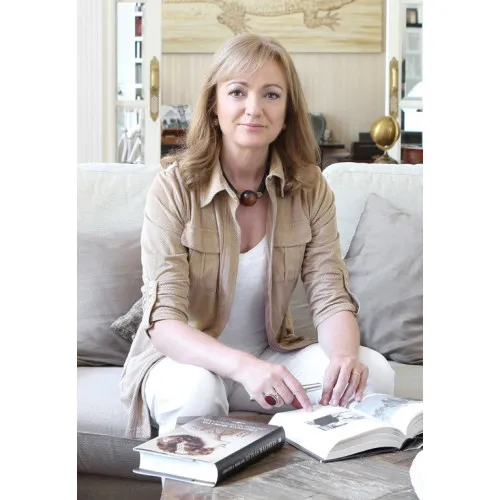 (c) Amaya Aznar
(c) Amaya Aznar
Cristina Morató
Cristina Morató es periodista, fotógrafa y escritora. Desde muy joven ha recorrido el mundo realizando numerosos reportajes. Durante años alternó sus viajes con la dirección de programas de televisión y colaboraciones en radio y en prensa, trabajos que abandonó para escribir sobre la vida de las grandes viajeras y exploradoras de la historia. En busca de sus rastros recorrió más de cuarenta países. Fruto de su investigación son las obras Viajeras intrépidas y aventureras, Las reinas de África, Las damas de Oriente y Cautiva en Arabia. Sus libros Divas rebeldes, Reinas malditas y Diosas de Hollywood reflejan su interés por descubrir el lado más humano y menos conocido de mujeres poderosas y legendarias. Es también autora de la biografía de Lola Montes, Divina Lola. Traducidas a varios idiomas, todas sus obras han sido acogidas con extraordinario éxito de crítica y público.
Es miembro fundador de la Sociedad Geográfica Española, y miembro de la Royal Geographical Society de Londres.
Sígueme en redes:
Sus obras
Actualidad
Mucho más que libros
 Tendencias
Tendencias
 Lecturas
Lecturas
 Tendencias
Tendencias
 Lecturas
Lecturas

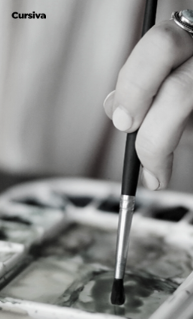 Mujeres e ilustración
Mujeres e ilustración
En el ciclo Mujeres e Ilustración en Madrid cinco formadoras compartirán sus procesos creativos para que puedas sacar adelante tu proyecto artístico.
199,00€ Matricularme

